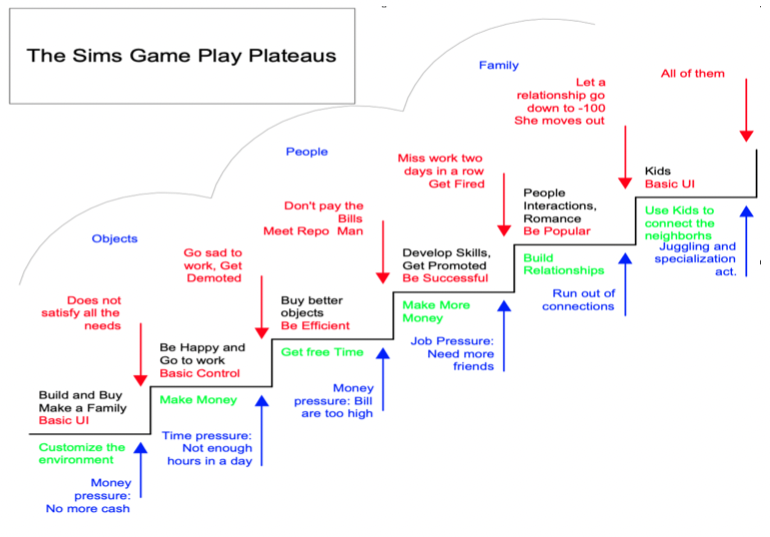Different goals at different scales, the “plateaus” graph
The game is requiring the player to have different goals. Often the player is expected to be focused on very short term actions, at the same time the player is required to achieve longer term goals. I found most useful to sort all those different actions and goals in the design and to build a table of them.
In general the player cannot do the same thing over and over. Most actions of the player are limited by some mechanism in the game, not enough time or not enough money. Those limits are what drive the user to a specific and different goal. So, the different goals of the user are connected by the limits of the actions the user take to achieve those goals.
It is important to build a complete collection of those goals, actions, and limits and to understand how they are connected.
I believe that understanding this cascade of different goals at different scales is a cornerstone of any design and as long as it is not understood, the design might not be complete.
Here is “the plateau diagram” we made for the Sims in December 1998.

Here is how the plateau diagram works:
In black above each step you find what is the basic action that the user does. Below the plateau, in green you find what the goal of the user is to perform that action. In blue below it, you find what puts a limit to what the user is doing. The next level of the plateau is higher, and is a general solution to the limit that was described in blue at the level just under it, but it has also a limit in itself, and a solution (the yet higher next plateau).
If we could track what the user’s goal is at any instant we would see that every few seconds he worries about the bottom plateau, that once per minute he worries about the second plateau, that every few minutes he worries about the third one, etc…, a less and less frequent goal/action related focus from the player as the plateau are higher.
This connects again to the mental model, as it is important for the user to build an understanding of the different connections here between the different plateaus. Also, most likely the top plateau is presented to the user as the place to get, therefore we want the user to figure the dotted lines on how to get there sooner or later.